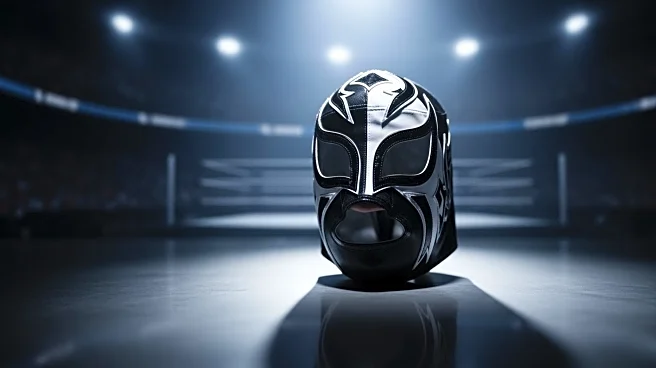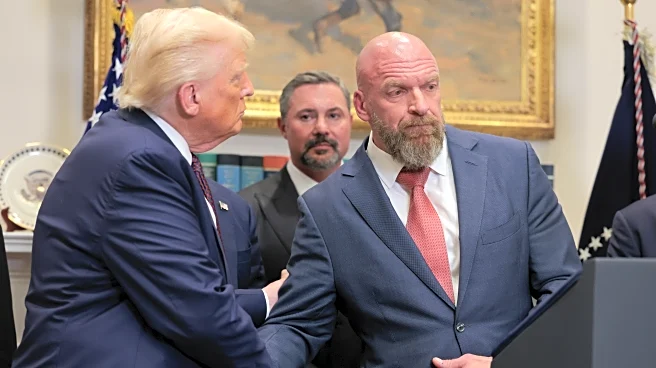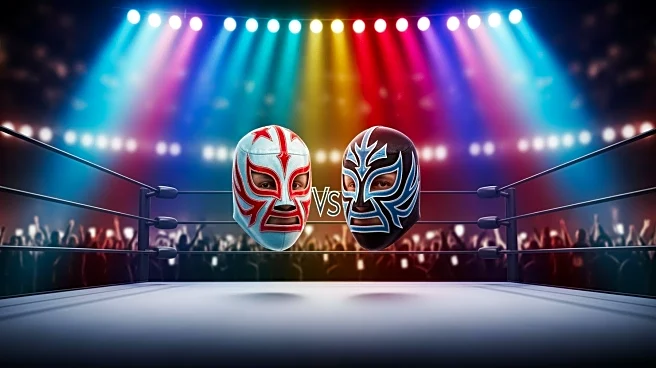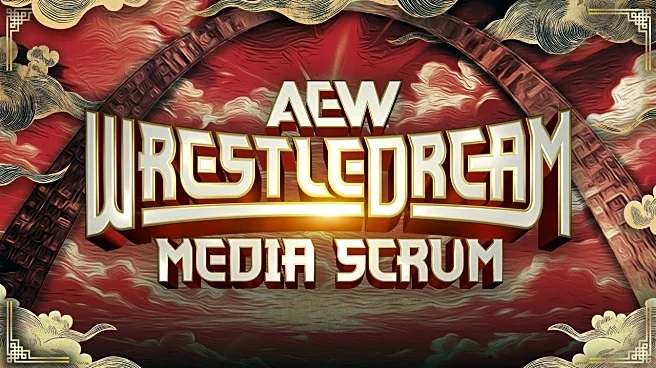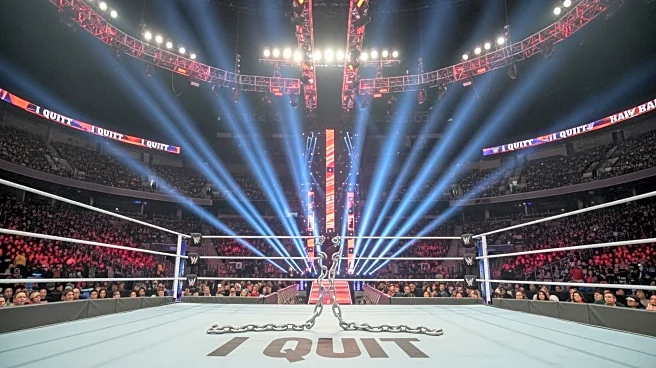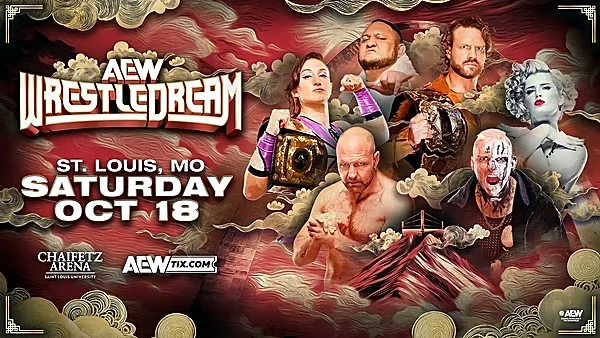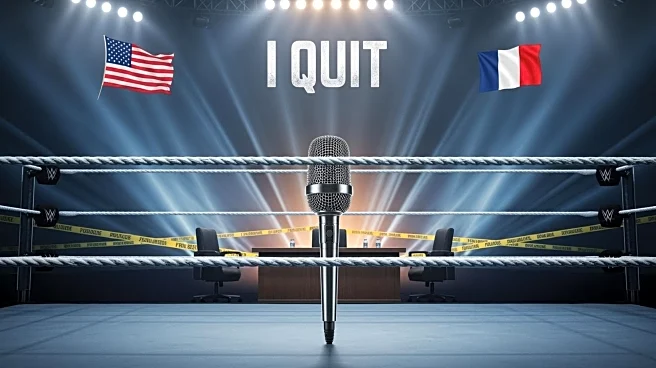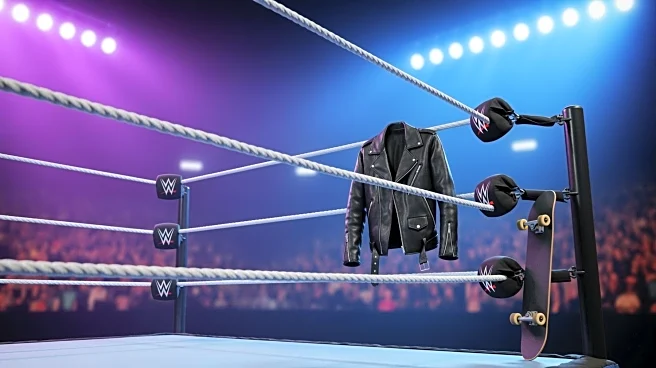What's Happening?
A legendary figure in professional wrestling, Sting, made a surprise return at the 'AEW WrestleDream 2025' event. During an 'I Quit' match between Jon Moxley and Darby Allin, Sting intervened to save Allin from being drowned by Moxley. Armed with his
iconic baseball bat, Sting took out members of the Death Riders, allowing Allin to secure victory by forcing Moxley to quit with the Scorpion Deathlock. This event marked a significant moment as it concluded the 'WrestleDream 2025' pay-per-view. Sting, who had his final professional wrestling match at 'AEW Revolution 2024,' continues to make surprise appearances, much to the delight of fans.
Why It's Important?
Sting's unexpected return highlights the enduring appeal and influence of veteran wrestlers in the industry. His presence at AEW events not only draws attention but also bridges the gap between different generations of wrestling fans. This move could potentially boost AEW's viewership and fan engagement, as Sting's legacy attracts both long-time followers and new audiences. The event underscores AEW's strategy of leveraging iconic figures to enhance its brand and compete with other wrestling promotions, particularly WWE. For fans, Sting's appearances evoke nostalgia and reinforce the emotional connection to wrestling's storied past.
What's Next?
The future of Sting's involvement with AEW remains uncertain, but his recent appearances suggest that he may continue to play a role in key storylines. Fans and industry insiders will be watching closely to see if Sting will participate in more matches or serve as a mentor to younger wrestlers like Darby Allin. AEW may capitalize on Sting's popularity by featuring him in promotional activities or special events, further solidifying its position in the wrestling entertainment landscape. Stakeholders will be keen to see how AEW balances nostalgia with innovation to maintain its competitive edge.
Beyond the Headlines
Sting's return also raises questions about the physical demands placed on aging athletes in the wrestling industry. At 66, Sting's ability to perform at a high level is remarkable, yet it highlights the broader issue of health and safety for veteran wrestlers. The industry may need to address how to support aging performers while ensuring their well-being. Additionally, Sting's appearances could inspire discussions about the role of legacy and tradition in modern wrestling, as fans and promoters alike navigate the evolving landscape of sports entertainment.
